Images of Jupiter
16 March 2004
March 14-17 finally brough clear skies with intermittent good seeing, allowing me to
obtain 13 gigabytes of images of Venus, Jupiter and Saturn. The images were obtained with
a 6" Intes MN61 Maksutov-Newtonian and a Tele Vue Powermate 5x (f/30) and a Philips
ToUcam Pro 840K plus IR blocking filter.
I have been experimenting a lot with different image processing parameters so the
images do not have a uniform look. Once I have found parameters I am happy with I may
replace several images with reprocessed versions.

16 March 2004 22:50:02 UTC. Here the seeing was really bad, far worse
than in the previous two days and I was surprised that anything at all was clearly visible
in this image because the raw images looked horrible, low contrast and fuzzy with a lot of
turbulence. This is a stack of 550 images processed in RegiStax with wavelet parameters
(70,50,40,30,4,2) and then postprocessed in Photoshop. This is my first series of images
showing the Great Red Spot.

16 March 2004 22:28:35 UTC. This one is considerably better even though
the seeing was equally bad. The stack was brighter (higher gain), I stacked fewer images
and I processed it very differently by using the dyadic wavelet setting with parameters
(1,1,27,9,1,1) in RegiStax. This was followed by more extensive postprocessing in
Photoshop.
15 March 2004
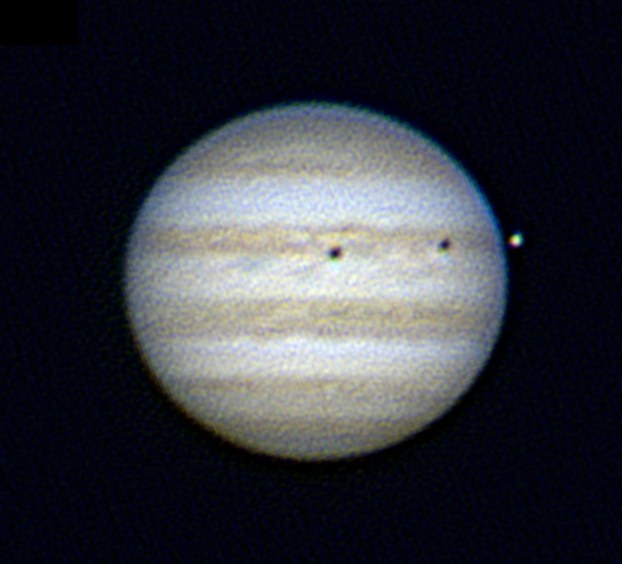
15 March 2004 23:25:12 UTC. Jupiter's altitude was a little over 30
degrees above the horizon. Stack of 300 frames, wavelet processing (1,1,50,50,90,90) in
RegiStax followed by processing in Photoshop. Europa is visible at right and the shadows
of Io (left) and Europa (right) are visible on Jupiter's disk. I have a lot of stuff
(about 15 AVI files) from this evening that I still haven't processed. More images will
appear here once I have processed some of these files.
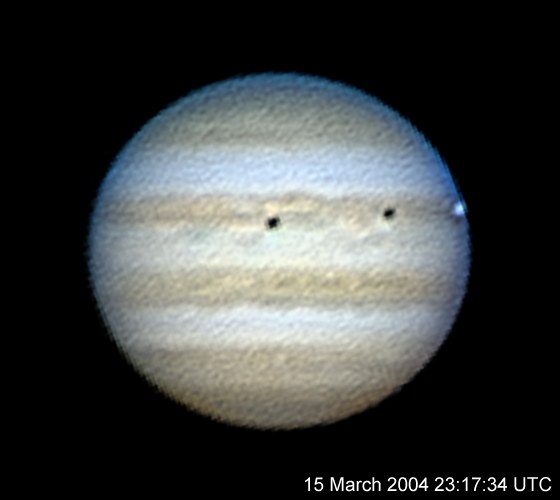
15 March 2004 23:17:34 UTC. UTC. This one was taken as
Europa was about to exit its transit across Jupiter's disk. Stack of 430 images, wavelet
processing (90,90,55,55,40,40) in RegiStax. This was followed by fairly extensive
postprocessing in Photoshop which involved repeatedly despeckling and applying an unsharp
mask. Finally some Gaussian blur was applied and the color saturation increased.
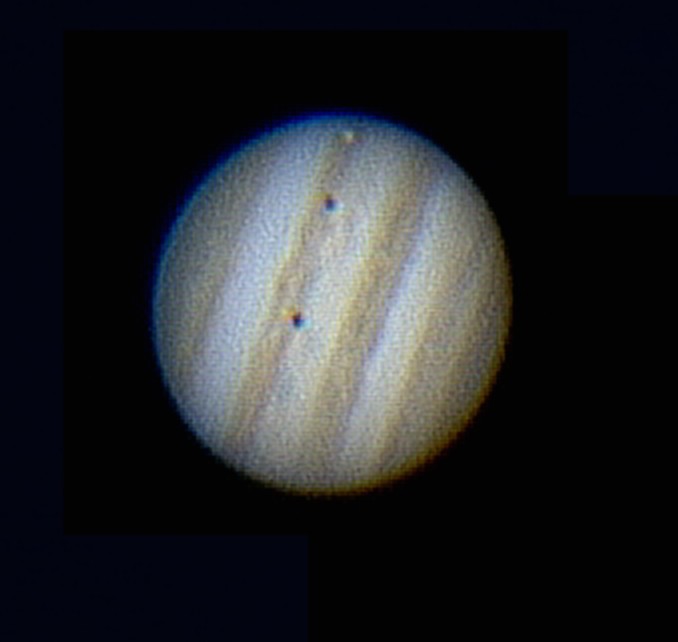
15 March 2004 23:09:02 UTC. This one was taken 8 minutes earlier. Stack
of 250 frames, wavelet processing (70,70,50,50,30,30) in Registax followed by processing
in Photoshop. Europa is visible against Jupiter's disk near the top as are the the shadows
of Io and Europa.

15 March 2004 22:31:20 UTC. A stack of 330 images, wavelet parameters
(1,25,35,35,25,25) in RegiStax followed by postprocessing in Photoshop.
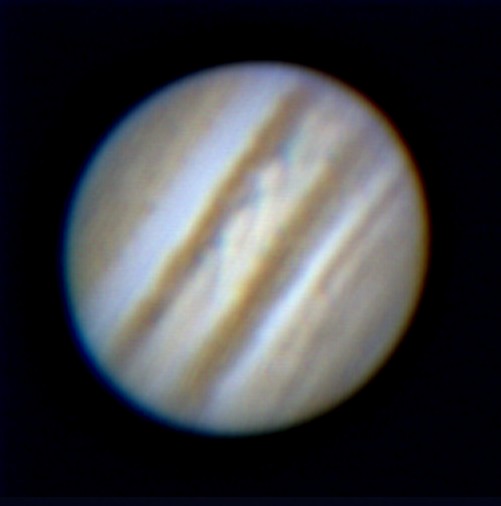
15 March 2004 00:45:58 UTC. Jupiter's altitude above the horizon was 34
degrees. Stack of 200 frames, wavelet processing in RegiStax. In the roughly 5 minutes
since the image at bottom Io has disappeared behind Jupiter.
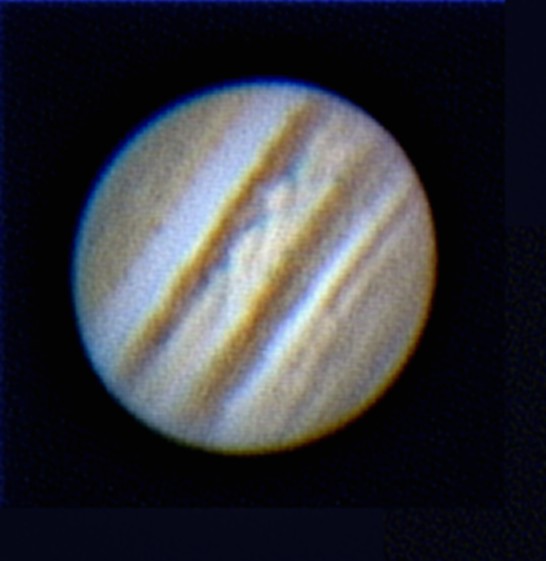
A reprocessed version of the above image, this one is a stack of 285 images and has been
processed with higher wavelet settings and some post processing in Photoshop.

15 March 2004 00:39:50 UTC. A stack of 239 images with wavelet processing
(1,25,35,35,1,1) in RegiStax followed by processing in Photoshop. Here Io is just about to
disappear behind Jupiter's limb.

A reprocessed version of the above image. The difference is in the Photoshop post
processing. Here the color saturation has been increased and the image has been smoothed a
bit more to get rid of noise.









